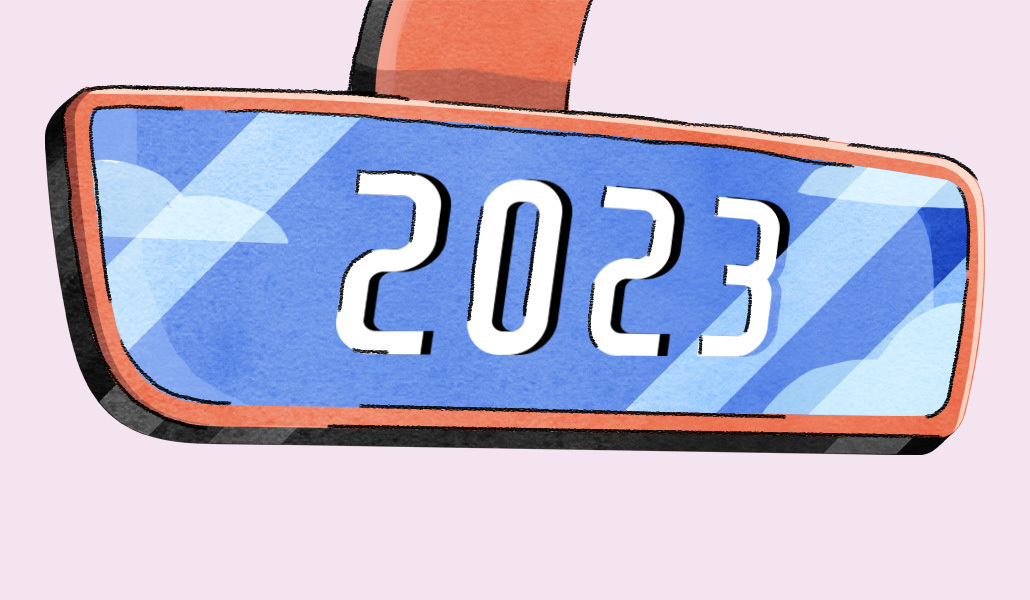Return to office, quit rates, rise of generative AI: How work changed this year

Workers and employers both experienced major shifts throughout 2023 when it comes to the way work gets done.
Staff finally returned to offices after working remotely for the past few years, but this time in new hybrid arrangements. Generative artificial intelligence tools became available to the general public and were swiftly adopted by workers, job seekers and now increasingly by employers. And Gen Z workers continued to enter the workforce, bringing their values around work-life balance and individuality with them, and they’re expected to outnumber baby boomers on the job in the next year.
Here’s a look at the state of the working world in 2024, by the numbers:
- 88% of companies now mandate employees work a certain number of days in the office.
- 33% of employers say their workers are in the office three days a week.
- 54% of companies are in a hybrid schedule with no plans to go back to five days in person again.
- 6% of employers said they are fully remote and have already or plan to give up most or all of their office space.
- 75% of companies plan to downsize office square footage in the next year.
- 56% of workers admitted to using generative AI tools on the job this year.
- 8.7 million jobs were open in the U.S. this October, compared to 10.5 million last year.
- 15 million Gen Zers have already entered the U.S. workforce, and are expected to outnumber baby boomers in the next year.
Hybrid work takes over
Employers and their staff spent most of the year wrestling over return-to-office policies, though by the end seem to have reached a compromise with hybrid work. The most popular arrangements are those requiring staff work in-person three days a week, and work from home the other two days. Some 33% of companies are on three-days-a-week in-person hybrid schedules, according to an October survey of over 200 HR and business leaders from outplacement firm Challenger, Gray and Christmas.
Tuesdays and Wednesdays are the most popular days to work in-office, with occupancy at about 60% on those days this year, according to another report from Scoop Technologies, hybrid work planning tools provider. That’s compared to 32% occupancy on Fridays, 35% on Mondays and 55% on Thursdays, that report found.
“In some ways I think there are a lot of good arguments for why a company might want their employees in the office two or three days a week for certain types of collaboration, or building relationships between employees for professional development, that are easier to have in person versus virtual. I think there’s a lot of value,” said Rob Sadow, CEO and cofounder of Scoop.
“I think where the argument falls flat is that I don’t see any good argument for employees to be in the office five days a week,” Sadow said.
Quitting quells
Widespread job hopping eased significantly this year following the Great Resignation. The rate of people quitting their jobs in the U.S. was at 2.3% in October, compared to a record 3% in the spring of 2022, according to data from the U.S. Bureau of Labor Statistics.
At the same time, the number of open jobs fell to 8.7 million in October, compared to 10.5 million around the same time last year, according to BLS data.
“The labor market has cooled, employees don’t have quite as much power. We’ve seen wages start to level off, we’re not seeing big increases in wages anymore, so it’s kind of that continued cooling,” Andy Challenger, senior vp at Chicago-based global outplacement and career transitioning firm Challenger, Gray and Christmas.
Generative AI and initial impacts on work
More than half of U.S. workers have used generative artificial intelligence tools like ChatGPT on the job this year, according to a September survey from the Conference Board of over 1,000 U.S. office workers. That’s been a challenge for their employers to navigate, with just 26% of workers saying their company has a policy covering generative AI use among staff. But 23% did say their employer is working on a policy to implement soon.
Job seekers are also increasingly turning to AI tools to help craft their application materials, like resumes, cover letters and even answers to potential interview questions. Some 46% of job candidates said they’ve used AI when applying for jobs this year, an August survey from Gartner including responses from over 3,500 job hunters found.

